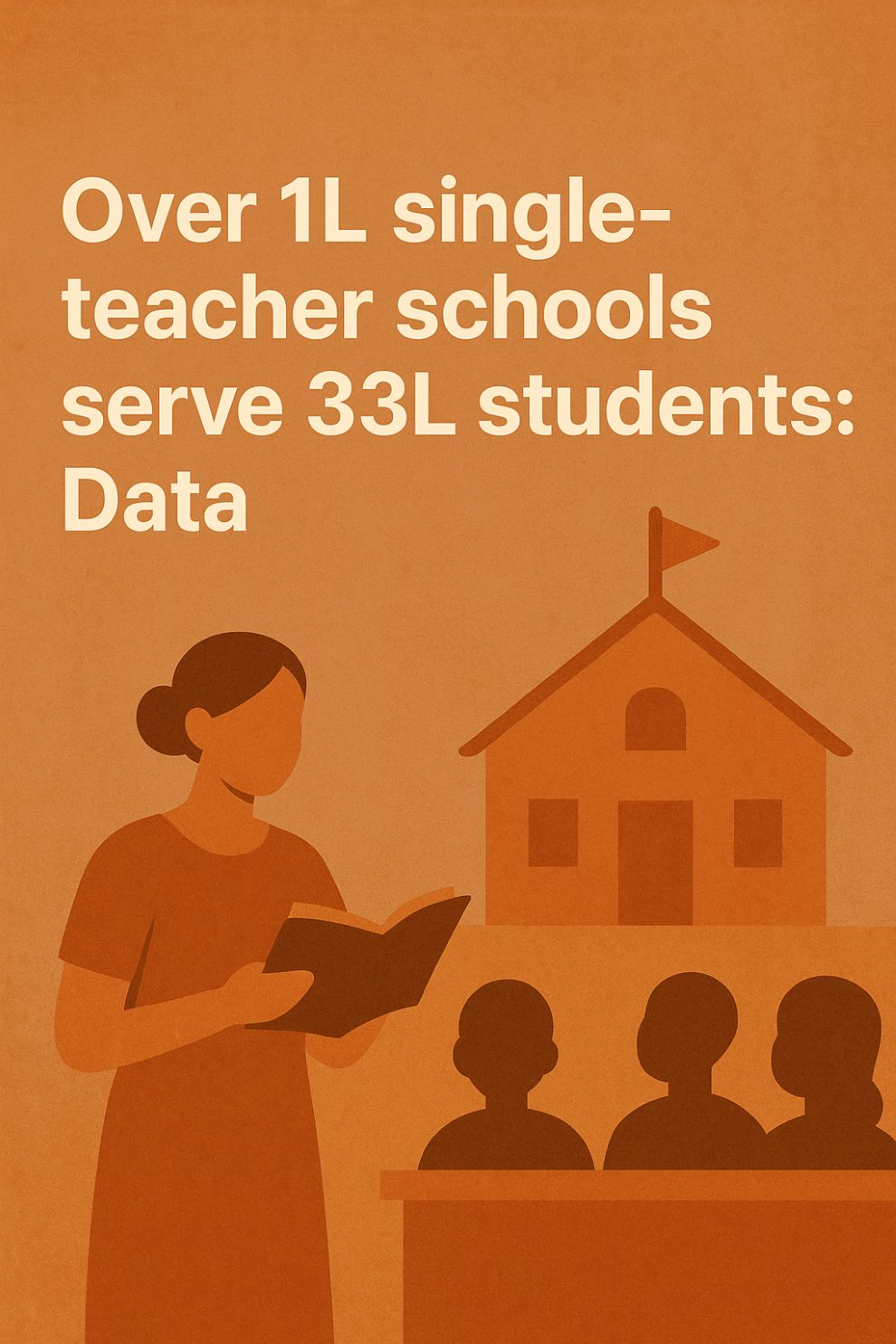Science
Over 100,000 Single-Teacher Schools Serve 3.3 Million Students in India

More than 33 lakh students are enrolled in over 1 lakh single-teacher schools across India, according to the Ministry of Education. The data for the academic year 2024-25 reveals that these schools, which number 104,125, collectively serve 3,376,769 students, averaging approximately 34 students per school.
Andhra Pradesh leads the country in the number of single-teacher schools, while Uttar Pradesh has the highest student enrollment in these institutions. In contrast, the overall number of single-teacher schools has decreased from 118,190 in the previous academic year to 110,971, representing a decline of around six percent.
Challenges and Government Initiatives
The Right to Education Act, enacted in 2009, mandates a pupil-teacher ratio of 30:1 at the primary level and 35:1 at the upper primary level. Single-teacher schools often struggle to meet these standards, complicating the learning process. A senior official from the Ministry of Education noted that the government is committed to enhancing educational outcomes by consolidating schools, a process referred to as “rationalisation.”
To address the challenges posed by single-teacher schools, the government is redeploying teachers from schools with no student enrollment to those with a single teacher. This strategy aims to optimize teacher availability and improve learning environments.
Distribution of Single-Teacher Schools and Enrollments
In terms of distribution, Andhra Pradesh tops the list with 12,912 single-teacher schools, followed by Uttar Pradesh with 9,508, and Jharkhand with 9,172. Other states such as Maharashtra, Karnataka, and Lakshadweep also feature prominently, while Delhi reports the lowest number, with just nine single-teacher schools.
Uttar Pradesh not only has the most schools but also the highest student enrollment among single-teacher facilities, with 624,327 students. Jharkhand follows with 436,480 students, while West Bengal and Madhya Pradesh have 235,494 and 229,095 students, respectively.
In terms of student-to-teacher ratios, Chandigarh and Delhi report the highest average enrollments per school, with 1,222 and 808 students, respectively. Conversely, states like Ladakh, Mizoram, and Himachal Pradesh show significantly lower averages, with enrollments of 59, 70, and 82 per school.
The high number of students per school indicates an effective utilization of available infrastructure, while low enrollment figures have prompted the government to initiate mergers of underperforming schools to enhance resource allocation.
Efforts to improve educational quality are ongoing, focusing on better teacher distribution and maximizing the use of existing facilities. The government’s strategic initiatives aim to ensure that every child has access to quality education, thereby enhancing the overall educational landscape in India.
-

 World3 months ago
World3 months agoSBI Announces QIP Floor Price at ₹811.05 Per Share
-

 Lifestyle3 months ago
Lifestyle3 months agoCept Unveils ₹3.1 Crore Urban Mobility Plan for Sustainable Growth
-

 Science3 months ago
Science3 months agoNew Blood Group Discovered in South Indian Woman at Rotary Centre
-

 Sports3 months ago
Sports3 months agoBroad Advocates for Bowling Change Ahead of Final Test Against India
-

 World3 months ago
World3 months agoTorrential Rains Cause Flash Flooding in New York and New Jersey
-

 Top Stories3 months ago
Top Stories3 months agoKonkani Cultural Organisation to Host Pearl Jubilee in Abu Dhabi
-

 Science3 months ago
Science3 months agoNothing Headphone 1 Review: A Bold Contender in Audio Design
-

 Sports3 months ago
Sports3 months agoCristian Totti Retires at 19: Pressure of Fame Takes Toll
-

 Top Stories3 months ago
Top Stories3 months agoAir India Crash Investigation Highlights Boeing Fuel Switch Concerns
-

 Business3 months ago
Business3 months agoIndian Stock Market Rebounds: Sensex and Nifty Rise After Four-Day Decline
-

 Politics3 months ago
Politics3 months agoAbandoned Doberman Finds New Home After Journey to Prague
-

 Top Stories3 months ago
Top Stories3 months agoPatna Bank Manager Abhishek Varun Found Dead in Well









